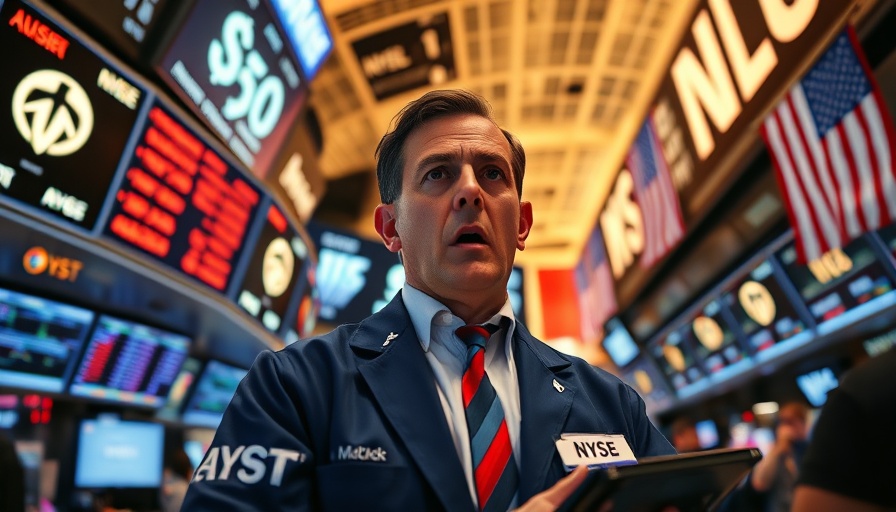
Market Shockwaves: How Tariff Threats Alter Investor Sentiment
Recent threats from former President Donald Trump to impose massive tariffs on Chinese imports have sent shockwaves through U.S. stock markets, signaling a potential uptick in trade tensions between two of the world's largest economies. On October 10, 2025, the S&P 500 experienced its steepest drop since April, falling 2.7% and contributing to a broader sell-off that wiped out gains across various sectors, including technology and smaller companies.
As market observers point out, the abrupt decline was triggered by Trump's social media announcement regarding tariffs, which he described as a response to China’s new restrictions on rare earth minerals—vital for a range of technology products from smartphones to electric vehicles. Analysts have noted that although many initially perceived Trump's comments as mere posturing, they have nevertheless ignited fears about the potential for escalated trade wars.
Understanding Rare Earths: The Crux of the Trade Debate
Trump's concerns pivot on China's recent decision to impose limits on rare earth minerals, critical resources in technology manufacturing. Historically, the U.S. has relied heavily on these minerals, with China controlling a significant portion of the global supply. The development raises alarm bells not just for tech companies but also for investors, as geopolitical tensions can drastically influence market stability.
Experts like Adam Crisafulli of Vital Knowledge highlight that the recent market turmoil might have been inevitable given the overvalued price levels of U.S. stocks after a robust rally. The market's precarious situation is amplified by ongoing issues like a government shutdown and declining consumer sentiment, pointing to a potentially turbulent road ahead.
Investor Reactions: A Retreat from Risk
In the wake of Trump's comments, investors retreated from riskier assets, a move typical in times of uncertainty. Stocks from leading tech giants like Apple and Nvidia faced considerable selling pressure, alongside companies in the AI sector, where comparisons to the dot-com bubble remain fresh. Investors are left weighing whether to uphold their positions or reassess their strategies in light of potential tariffs and geopolitical strains.
Economic Sentiment: The Bigger Picture
Consumer sentiment offers a stark insight into the American public's financial anxiety. According to a recent survey from the University of Michigan, there was a slight decline in consumer confidence, marking a worrying trend amid fears of rising prices due to tariffs and a stagnant job market. Economists stress that any increase in tariffs could significantly reduce consumer purchasing power, leading to sluggish economic performance.
Joanne Hsu, director of the Surveys of Consumers, noted that economic concerns are increasingly at the forefront of public consciousness, which could impact spending and further influence market dynamics. This ebbing consumer confidence could result in consumers tightening their spending, further stressing the stock market and economic growth prospects.
What Lies Ahead: Predictions and Opportunities
As trade tensions remain unresolved and the next moves from both the Trump administration and Chinese officials are closely monitored, investors may need to brace for ongoing volatility. With inflation and interest rates in flux, many are looking towards monetary policy adjustments as well as fiscal developments that could mitigate some of these economic pressures.
Experts suggest that investors should prepare for a scenario where continued tariffs could become a norm, which would necessitate a reevaluation of investment strategies. This might include seeking portfolios more insulated from international trade dynamics or investing in sectors poised to benefit from shifts in the global supply chain.
Conclusion: The Turbulent Terrain of Today’s Markets
As stock prices react violently to political statements and trade policies, it is clear that market participants remain on high alert. For investors, keeping abreast of these developments is more important than ever. Monitoring both market sentiment and economic indicators can provide valuable insights into navigating this uncertainty.
In this volatile landscape, now is the time for investors to assess their risk tolerance and consider diversified strategies to weather the potential storms ahead.
 Add Element
Add Element  Add Row
Add Row 



Write A Comment